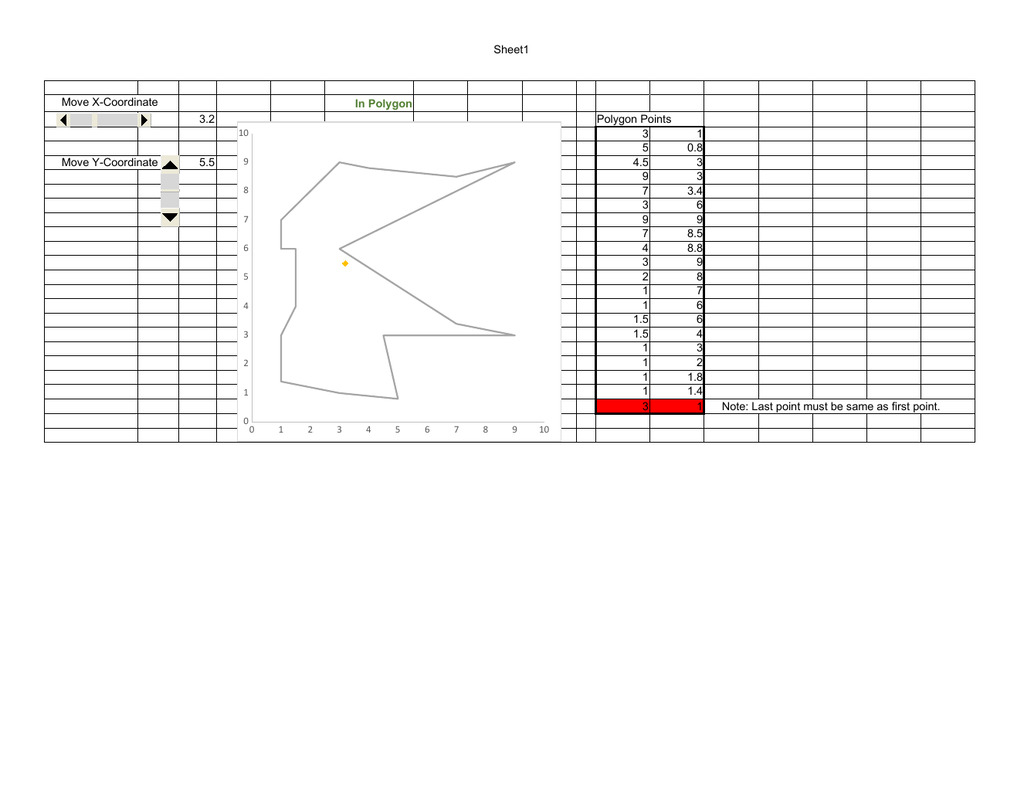I have this information below that define areas on a map. Is there a way to determine if a longitude and latitude are within one of these areas?
| OBJECTID | AGENCY | DIV | UNIT_NAME | ADDRESS | CITY | AREA_SQKM | Shape__Area | Shape__Length |
1 | Toronto Police Service | D11 | 11 Division | 2054 Davenport Rd | Toronto | 18.67845803 | 35692935.07 | 28190.11106 |
2 | Toronto Police Service | D12 | 12 Division | 200 Trethewey Dr | Toronto | 24.78034332 | 47417573.68 | 33029.13457 |
3 | Toronto Police Service | D13 | 13 Division | 1435 Eglinton Av W | Toronto | 18.60191063 | 35591722.93 | 24616.57917 |
4 | Toronto Police Service | D14 | 14 Division | 350 Dovercourt Rd | Toronto | 14.17525415 | 27083979.14 | 30017.70564 |
5 | Toronto Police Service | D22 | 22 Division | 3699 Bloor St W | Toronto | 68.12188386 | 130097609.1 | 72765.03189 |
6 | Toronto Police Service | D23 | 23 Division | 5230 Finch Av W | Toronto | 57.64228008 | 110369052.3 | 54270.05361 |
7 | Toronto Police Service | D31 | 31 Division | 40 Norfinch Dr | Toronto | 42.66749447 | 81789149.85 | 44477.14656 |
8 | Toronto Police Service | D32 | 32 Division | 30 Ellerslie Av | Toronto | 61.06048027 | 117079222.9 | 43658.49725 |
9 | Toronto Police Service | D33 | 33 Division | 50 Upjohn Rd | Toronto | 52.7888815 | 101244281.9 | 45148.84874 |
10 | Toronto Police Service | D41 | 41 Division | 2222 Eglinton Av E | Toronto | 44.57511239 | 85395988.8 | 58875.05415 |
11 | Toronto Police Service | D42 | 42 Division | 242 Milner Av E | Toronto | 84.61174885 | 162528804.9 | 59824.09155 |
12 | Toronto Police Service | D43 | 43 Division | 4331 Lawrence Av E | Toronto | 59.37000474 | 113873893.7 | 54424.50711 |
13 | Toronto Police Service | D51 | 51 Division | 51 Parliament St | Toronto | 8.601682841 | 16437802.1 | 25324.5062 |
14 | Toronto Police Service | D52 | 52 Division | 255 Dundas St W | Toronto | 9.228055772 | 17625448.21 | 35966.54447 |
15 | Toronto Police Service | D53 | 53 Division | 75 Eglinton Av W | Toronto | 31.29485302 | 59895251.81 | 37395.46015 |
16 | Toronto Police Service | D55 | 55 Division | 101 Coxwell Av | Toronto | 41.03398633 | 78486159.8 | 82307.80296 |







